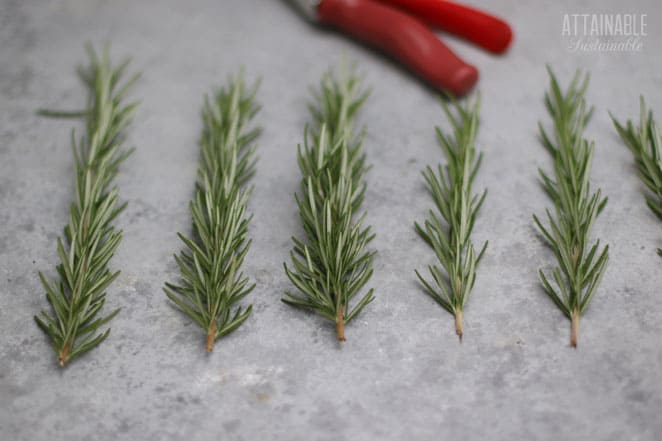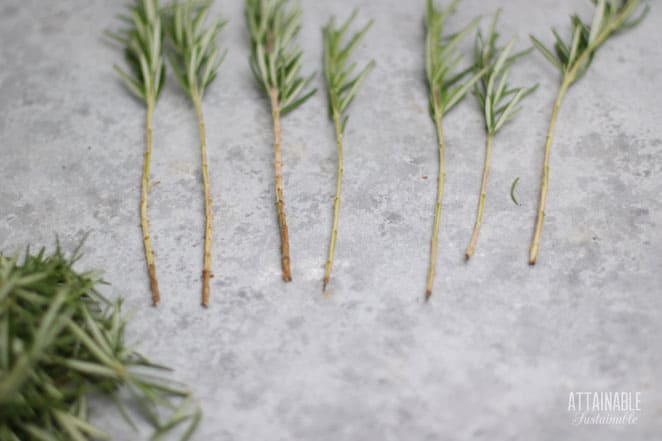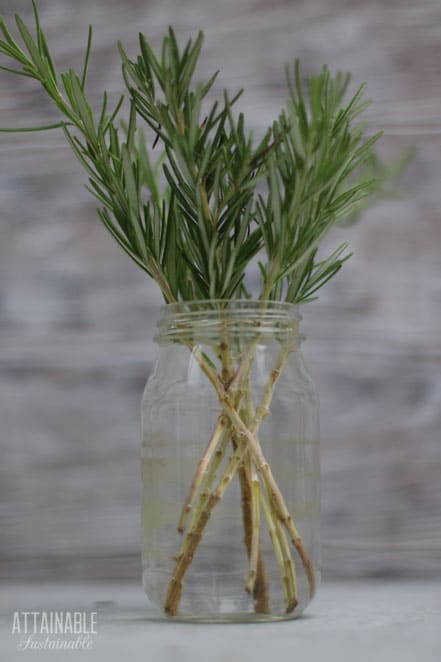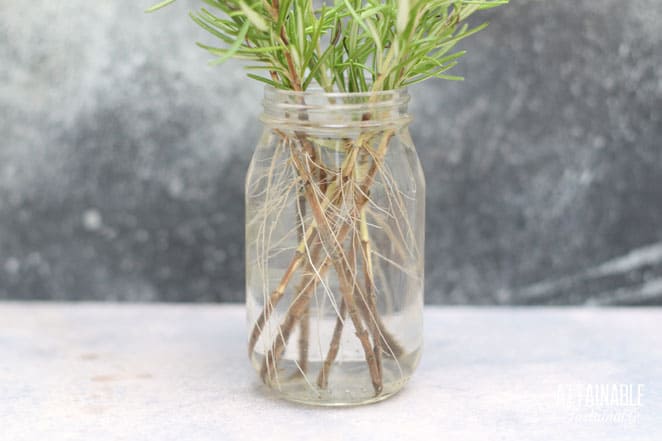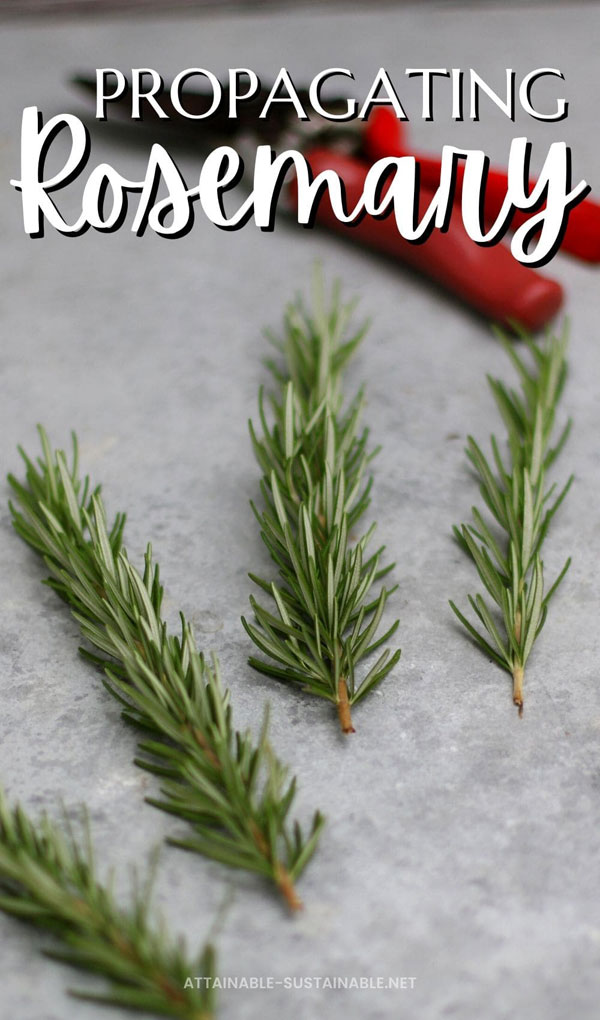I know a lot of gardeners ears perk up when they hear “free plants!” And that’s exactly what you get by propagating rosemary. Whether you’re expanding your own herb garden or growing plants for friends, here’s how to turn one rosemary plant into many.
You can grow basil from cuttings, too!
Propagating rosemary plants from cuttings
Rosemary is an essential ingredient in many recipes and I just love having fresh rosemary on hand. It’s an easy herb to propagate, meaning you can start enough plants to flavor all the things! Potted rosemary plants make good hostess gifts, too.
Read more about growing rosemary here.
What is propagation?
There are a number of ways to propagate — or start new — plants from a parent stock. Those include layering, root division, and cuttings. In this case, I’ll walk you through starting new plants from cuttings. The good news: It’s simple!
Getting to know rosemary
Rosemary (Rosmarinus officinalis) is a perennial herb in many regions, acting more like a sturdy shrub in USDA hardiness zone 8 and warmer. In those regions, it can live for years.
Grow Some Greens!
Ready to grow fresh greens, no matter WHERE you live? Sign up for my
FREE quick-start guide and start growing some of your own food!
In cooler climates, rosemary can be overwintered by growing it in a container. Bring it inside before the year’s first frost and move it back outside when the weather warms.
Choosing the parent plant
Start by choosing the plant that you’d like to replicate. This method works for any rosemary variety, so think about what you’re hoping to have growing in your yard.
Low, creeping or prostrate rosemary varieties are excellent for ground covers in a dry landscape and extremely drought tolerant. Upright varieties vary in height, allowing you to tuck them into a flower border as a background plant. Just know that the cuttings you propagate will result in a mature plant that has the same growth habit as the mother plant.
Step 1: Take cuttings
Once you’ve found a plant that you’d like to clone, get out your pruners. Cut 6″ lengths from the new growth on the plant. The stems should be flexible. Older, woody growth will not readily send out roots.
It’s a good idea to start with more stem cuttings than you think you’ll need; not every one will root.
New to gardening? Limited on space? The 5-Gallon Garden gives you the skills you need to grow food in the space you have. Get started with your garden today!
Step 2: Prepare the cuttings
Use your fingers to strip leaves from the lower portion of each cutting. Hold the stem of rosemary in one hand and use your other hand to pull down from the center point. The leaves you remove can be added to recipes. Maybe this rosemary and garlic no-knead bread?
Step 3: Place the cuttings in water
Place stems in a small, upcycled jar filled with water. Change the water every few days, making sure that the stems stay submerged. This prevents the stems from rotting when propagating rosemary.
I set my jar of stems on the windowsill in front of my sink, so I could track progress easily and remember to change the water.
You’ll see tiny roots start to appear in a few weeks. Allow the stems to remain in water for about a month or so, until each stem as multiple roots that are an inch or two long. Continue changing the water every few days.
Step 4: Plant the cuttings
Carefully remove the rooted cuttings from water and tease the roots apart. Fill 4″ pots with a well-draining soil mix and place one stem in each pot, burying the rooted portion of the stem, then water thoroughly.
Caring for rosemary plants
Place your little rosemary plants in a sheltered area until they get rooted in. Once you start seeing new growth on the plant, move it out into a sunny spot where it will get 6-8 hours of sunlight.
You can keep the rosemary plant in a container or transplant it directly into the ground. If you opt to grow it in a pot, keep an eye on its size. As it grows, you’ll need to transplant it to a larger pot to make sure there’s enough room for roots.
Rosemary plants don’t like to be overwatered. Allow the top 1″ off soil to dry out before watering and be sure that your container has sufficient drainage.
Once the plant reaches 8-10″ in height or so, you can begin cutting and using the fresh rosemary in cooking. Trimming the plant regularly helps to create a full plant.


